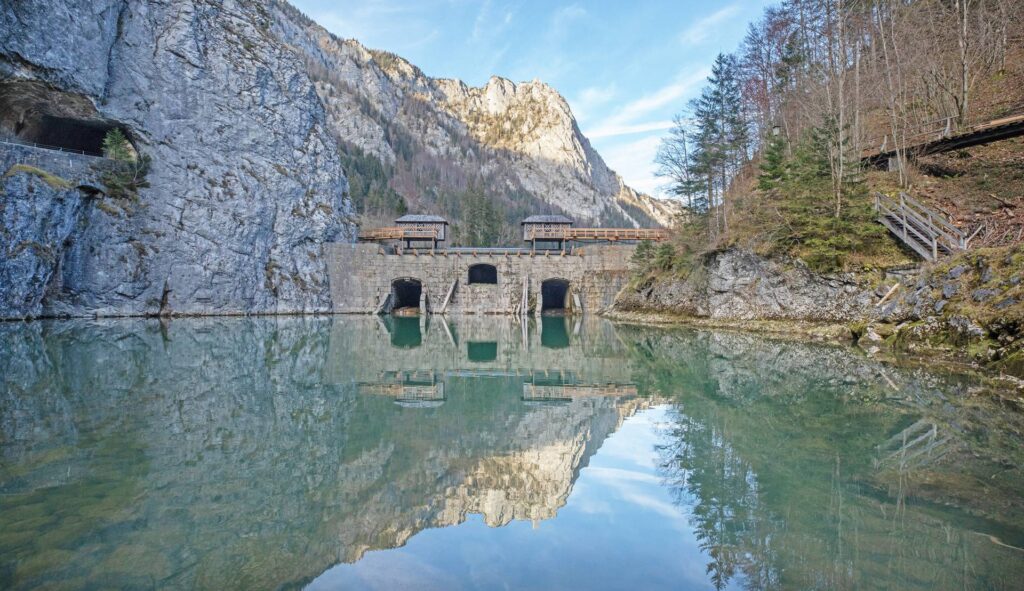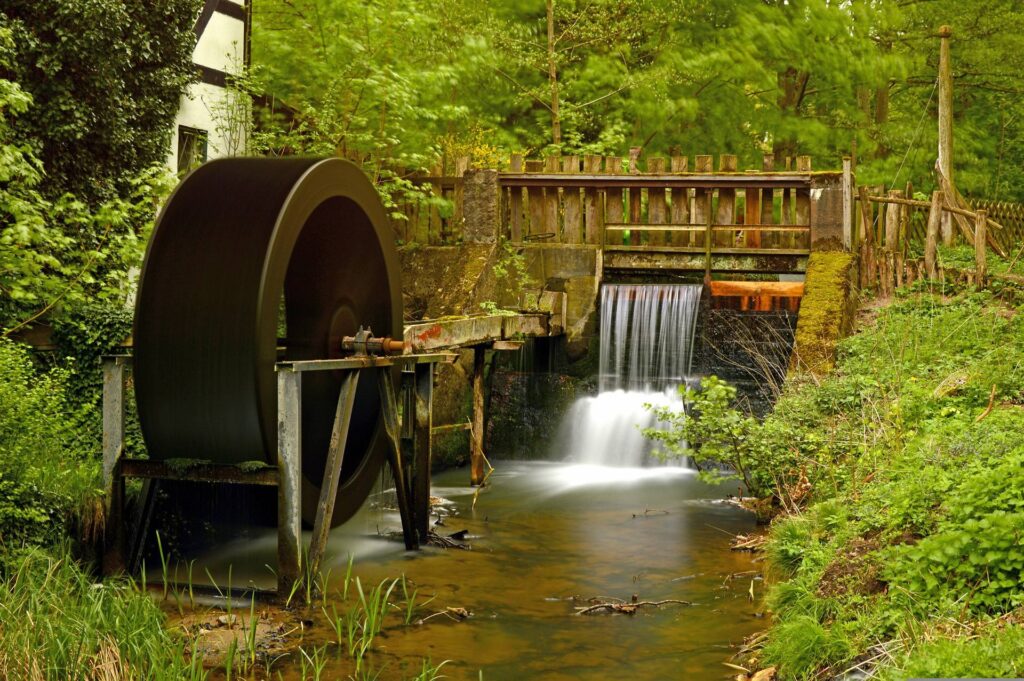Advancing the Role of Small Hydropower in Europe
Ursula Von der Leyen’s first mandate as President of the European Commission was defined by the European Green Deal, a comprehensive strategy to drive the EU towards climate neutrality and sustainability. In her second mandate, the focus shifted to its successor, the Clean Industrial Deal, which seeks to merge the goals of decarbonisation and competitiveness into a cohesive growth strategy. Released in late-February 2025, the Clean Industrial Deal outlines plans to, among others, improve energy affordability, mobilise investments in renewable energy, and restore Europe’s industrial strength and leadership in the climate transition.

© Pixabay / Franz
Parallel to these new EU initiatives and legislation developments, national governments of EU Member States need to transpose recent EU legislation under the Green Deal into national law. It needs to be highlighted that most of this European legislation such as the revised Renewable Energy Directive (RED III) can be used to promote hydropower. Yet, the final decision and the extent lies in the responsibility of EU Member States.
Member States should use all possibilities under RED III to promote hydropower
Despite the new wording “Clean Industrial Deal”, the European Commission regards the further development of renewable energy (and energy efficiency) as an important tool to enable Europe’s energy independence and to supply cheap energy.
The amended Renewable Energy Directive (RED III) plays a pivotal in this. However, despite these efforts and opportunities for Member States, significant challenges persist for (small) hydropower developers. These include delayed RED III transposition, the continuous need for extensive environmental impact assessments, and a lack of political will to use the opportunities and benefits of small hydropower projects. Even with the recognition of renewable energies as being of overriding public interest, many hydropower stakeholders have expressed frustration over the persistent administrative and legislative hurdles. This issue is particularly evident with the exclusion of hydropower from so-called Renewable Acceleration Areas (RAAs), which would allow for fast-tracked permitting processes and a reduction of legislative procedures. It is time for national governments to use the possibilities provided by the relevant EU legislation for the hydropower sector.
Small hydropower’s opportunities for storage
Recognising (small) hydropower as an important source of renewable energy is essential, given its ability to contribute to flexibility, energy storage, and congestion management. These advantages make small hydropower a key player to enable the integration of more volatile renewable energy sources, such as photovoltaic and wind, while contributing to the decentralisation and stability of the grid system. Parallel to ideas of the European Commission to update its recommendation on energy storage (C/2023/1729), project developers and decision-makers look into the possibilities for small and medium-sized pumped storage power stations to improve regional new energy consumption capacity. EREF and its working groups are in the process of developing recommendations for decision-makers and to provide best-practice examples.
Implementation of the Nature Restoration Regulation
Parallel to the designation of Renewable Acceleration Areas (RAAs) in EU Member States under RED III, governments are also tasked with the development of national restoration plans (NRP) until the beginning of September 2026 due to the implementation of the Nature Restoration Regulation (NRR).
The Regulation entered into force across all Member States on the 18th of August 2024. It sets legally binding targets to restore 20% of the EU degraded land and sea ecosystem by 2030, and all ecosystems in need by 2050. To achieve these objectives, Member States must restore at least 30% of habitats covered by the NRR from poor to good condition by 2030 – 60% by 2040 and 90% by 2050. Priority is hereby given to areas located in Natura 2000 sites. Among others, the regulation foresees the restoration of 25,000 km of river ecosystems by 2030.
Governments need to identify in their national restoration plans restoration areas and list measures how they want to improve habitats and river ecosystems over the next two decades. EU Member States shall ensure synergies with the new Renewable Energy Directive and coordinate their national restoration plans with the mapping of areas necessary for the national contribution towards the Union´s renewable energy target of at least 42,5% by 2030.
The obligation for Member States to prevent deterioration of the ecosystem does not apply to deterioration caused by renewable energy projects, their connection to the grid and the related grid itself as well as storage assets outside Natura 2000 sites. This also applies to hydropower.
The European Commission is in the process of providing assistance to national governments on how to best develop such plans. An Implementation Regulation is planned for the coming weeks followed by an explanatory brochure and an online Reference Portal which includes necessary resources.
New methodology to establish free-flowing rivers
One of the key goals of the Regulation is the establishment of 25,000 km of so-called free flowing rivers. The Water Framework Directive provides already a definition of ecological continuity of rivers as a key biological supporting element. Yet, under the process of the Common Implementation Strategy (CIS) under the Water Framework Directive (WFD), the Commission, in consultation with governments and stakeholders including EREF and its members, develops a new methodology to establish free-flowing rivers by testing case studies of different river types across Europe.
Once finalised in autumn 2025, the Commission plans to use this new methodology for the implementation of the Nature Restoration Regulation. Intentions to publish the free-flowing rivers methodology as CIS guidance documents reflects the position of the Commission on the interpretation to give to the definition of “free-flowing rivers” given in article 3 of the Nature
Restoration Regulation. Parallel to that, the Commission plans for 2025 the collection of national cases on specifications and implementation of environmental flows to identify best practices and measures. A first discussion document on the basis of the first reported cases and a stakeholder workshop on environmental flows best practices are planned towards the end of 2025. A final report and recommendations are foreseen for the end of 2026. EREF and its members will again provide best-practice examples and recommendations from the small hydropower sector. Among others, EREF leads the working group on biodiversity of the ETIP Hydropower project and collects insights from hydropower stakeholders and experts on these issues. The resulting White Papers will be submitted to the European Commission and Parliament, addressing the policy and legislative changes needed to expedite hydropower deployment across Europe. Europe’s (small) hydropower sector demonstrates that electricity production and the ecological status of a river can go hand in hand harmoniously. Hydropower projects have advanced technologies and best management practices to promote the ecological status of rivers, such as fish passage systems, specialised turbines, and compromises between river flow and energy production needs.

© Pixabay / Peggychoucair
Model project in Norway
For example, at the Hafslund-Hunderfossen plant on the Gudbrandsdalslågen river in Norway, a series of innovative measures were introduced in 2023, leading to record-breaking levels of fish migration since the dam’s construction. These included optimised gate systems designed to improve fish migration, and the installation of novel automatic fish counters on fish ladders. Such measures underline the commitment of the hydropower sector to integrate eco-friendly measures into renewable energy production. It is also important to mention that small hydropower plants can lead to new and rare habitats for aquatic life, serving to improve their overall ecological status.
EREF calls on national governments to implement the Nature Restoration Regulation in a way that does not cause burdens to hydropower producers. EREF continues highlighting best practice examples and exploring other measures for the implementation of these directives to ensure that the role of small hydropower in Europe’s energy transition is not overlooked.
European Water Resilience Strategy
To better adapt to more frequent weather extremes such as floods and droughts due to climate change, the European Commission is developing a European Water Resilience Strategy. It aims to ensure clean and sufficient water for all, to protect ecosystems, and to strengthen Europe’s economy through sustainable water management.
EREF highlights the benefits of (small) hydropower for water resilience and climate adaptation. In addition to production of renewable electricity, hydropower supports the mitigation of water scarcity and prevention of floods by leveraging their water storage and regulating water flows. Ensuring these services, however, often entails additional costs for power plants.
EREF therefore calls on European decision-makers to recognise hydropower‘s dual role in energy production and water resource management. It is time for the EU to recognise hydropower’s role in contributing to climate adaptation and for individual Member States to ensure proper remuneration.